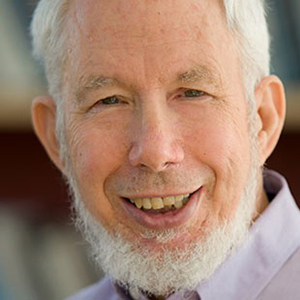As the Great Depression was getting firmly under way, John Maynard Keynes predicted that by the end of the first quarter of the 21st century the workweek would be a maximum of 15 hours. Sounding curiously like the young Karl Marx describing communist society, he envisioned that the principal challenge facing the ordinary citizen would be “how to use his freedom from pressing economic cares, how to occupy the leisure, which science and compound interest will have won for him, to live wisely and agreeably and well.”
Peter Evans is a professor emeritus in the department of sociology at the University of California–Berkeley and senior research fellow at the Watson Institute for International Studies at Brown University.

Mid-20th-century analysts continued to voice optimism that automation would soon minimize the need to work. Key premises of their optimistic theories of “modernization” included the notions that leisure time would inevitably increase and that the “natural” trajectory of change in the structure of employment would lead to an increase in the availability of good jobs, with shifts of employment from agriculture to industry, and increasingly to less onerous white-collar jobs.
Unfortunately, that optimism was not borne out, even in the rich countries of the global North. As we head toward 2025 the role of work in society could hardly appear more different. Either people have been increasingly sucked into a vortex of punishing, oppressive work that absorbs many more hours than the standard 40 per week, or they have been excluded from any possibility of jobs that provide decent livelihoods. But this trajectory could be reversed with sufficient political will bolstered by grass-roots mobilization.
The path that has pointed us toward dystopia in the world of work has been paved by four related processes. Two are clearly political shifts. First, work has been degraded by the widespread adoption of a “neoliberal” public policy package including de-regulation of markets, diminished government support for collective bargaining, and trade liberalization. Relatedly, most countries have devoted shrinking resources for public investment to meet the massive unmet needs for key productivity-expanding, welfare-enhancing services, notably education, health care, and child- and elder-care.
The remaining two are economic forces, though we would argue that on closer examination they are also underpinned by politics—power imbalances and foreclosure of constructive alternatives. Technological change has been deployed to the disadvantage of workers, reducing the ranks of industrial workers who have historically been most able to collectively defend their standard of living, and displacing workers from a broad range of sectors. At the same time, politically protected monopoly control of the most fruitful productive capital—ideas (“intellectual property”)—blocks workers’ access to new means of production that could otherwise generate a flowering of new, productive work opportunities. In a second economic factor, employers have re-structured their organizations to fragment the workforce, by shifting production and employment across organizational boundaries (outsourcing, temp use), temporally balkanizing the workforce with irregular and contingent schedules, and geographic dispersion. As a result of these trends, inequality has grown and precarious work has become the dominant form of new employment in the contemporary global economy.
But four countertrends could, if nurtured, pave a very different path. First, some democratic states have moved to limit or partly reverse the advance of precarity, expanding the scope of social protection and the “social wage.” While the Nordic countries continue many aspects of their social democratic legacy, particularly interesting are innovative policies emerging from less familiar sources. India now guarantees funding for rural communities to create jobs serving unmet community needs. Brazil’s Workers Party, in power since 2002, has driven improvements in workers’ standard of living with increases in the minimum wage, expansion of the Bolsa Familia welfare program, and other reforms. Precisely because these are modest “reformist” efforts by imperfect capitalist democracies, they suggest that reversing current trends toward precaritization is more broadly possible.
Chris Tilly is a professor of urban planning and sociology and director of the Institute for Research on Labor and Employment at the University of California–Los Angeles.

Second, strategies of mobilization and worker organization are essential, not just to provide political foundations for more progressive state strategies, but, even more important, to shift the calculus of employers away from “low road” strategies toward strategies more compatible with positive changes in the structure of work. New models of precarious-worker organizing, highlighted in other articles in this series, are particularly promising. Third is the resurgence of visions of the cooperative organization of production that would make “good” jobs a priority—akin to Robert Owen’s utopian strategies in the early days of British industrialization—most recently flourishing in experiments labeled the “solidarity economy.” Finally, while technological change has been used as a tool to degrade work and disempower workers, the current trajectory of technology also has subversive possibilities: the capacity for widespread, instantaneous, and costless sharing of ideas, and expanded means of de-centralized production through 3-D printers and other technologies. These new possibilities undermine capital’s power and legitimacy and have the potential to support a modernized Owenite vision of collaborative “peer production.”
None of these countertrends is sweeping the field, but they have proven impressively resilient and could be particularly powerful in combination. The obstacles to reversing the dystopian trajectory are indeed daunting. But equally daunting obstacles confront the long-term sustainability of the crisis-ridden, human potential-wasting, mean variety of capitalism currently dominant. A utopian world of work is not as remote as it seems.

For the Future of Work, a special project from the Center for Advanced Study in the Behavioral Sciences at Stanford University, business and labor leaders, social scientists, technology visionaries, activists, and journalists weigh in on the most consequential changes in the workplace, and what anxieties and possibilities they might produce.




